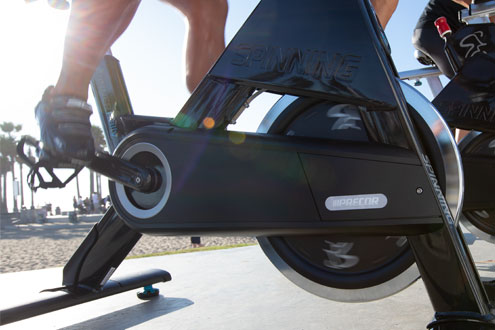EPOC (the Afterburn Effect) Defined
EPOC refers to the elevation in metabolism (rate that calories are burned) after an exercise session ends. The increased metabolism is linked to increased consumption of oxygen, which is required to help the body restore and return to its pre-exercise state. Contributing factors to a higher EPOC include:
- The re-synthesis of lactate to glycogen (stored carbohydrate in the muscles and liver)
- Re-oxygenation of the myoglobin and hemoglobin
- Increased ventilation
- Elevated heart rate
- Elevated neurotransmitters/hormones adrenaline and noradrenaline related to the central nervous system
- Higher core temperature
Enhancing EPOC can come from the implementation of certain eating strategies and the way in which one’s training is performed. This section will review key elements that should be applied to get the most out of EPOC.
Eating or Fasting:
In 2011, a study conducted by Paoli A., et.al, published in the Journal of Sport Nutrition and Exercise Metabolism, looked at the effect of eating before early morning exercise sessions and after (Paoli, et al., 2011). The results showed that eating before early morning exercise sessions elevated both metabolism and fat utilization for 24 hours afterwards. It’s important to know in the study that the subjects ate the same food and the same number of calories. The only difference was the timing of the first meal.
Application: If you are not an early-morning eater or are short on time, consider eating just one food or a homemade smoothie before your early morning workouts. Eat a real breakfast afterward, or soon afterwards, because the body is best at using the food consumed within 30–60 minutes to replenish depleted glycogen (the stored form of carbohydrate) and to stop the post workout breakdown of muscle.
Higher Intensity = Higher EPOC
The intensity of exercise appears to be the most significant factor in boosting post-exercise metabolism. A 2014 study conducted by Mann et al. that examined the recovery rate of male and female runners after running at 60%, 70% and 80% of their VO 2max revealed that the highest intensity workout produced the greatest afterburn.
Application: For those that are currently doing mostly aerobic, steady-state workouts, adding 1–2 strategically spaced high intensity training sessions per week (greater than 80–85% of the maximum heart rate) can be a catalyst for better results. Remember that going into high intensity sessions well-rested will lead to the highest quality workout.
Benefits of Intervals versus Steady-State Exercise
Mixing bouts of intense work with bouts of recovery can:
- Add variety
- Increase the power/watts generated during an interval in comparison to high-intensity steady-state work
- Contribute to maintenance of better formMaximally improve performance
- Maximally improve performance
- Further elevate EPOC as an added bonus
As an added bonus, high intensity interval training (HIIT) sessions can produce the results listed above within a shorter training session in comparison to lower intensity, steady-state rides. In addition to putting the body in an anaerobic state, there are also coordination benefits and additional muscle fiber recruitment that is created from a rapid ramping up of the heart rate and power output.
Application: There are many different ways to do intervals. To relate HIIT to Spinning®, which is a cardiovascular workout, with the intent of complete recovery (bringing the heart rate to the recovery range and remaining there long enough to produce a consistent power output from interval to interval), follow the guidelines below:
- HIIT Heart Rate Range: > 80–85%MHR
- Recovery Heart Rate: 60% MHR
Work Time |
Recovery Time |
Example |
| 90 seconds – 3 minutes | 100% of interval time | 2 minutes at > 80–85% MHR2 minutes at 60% MHR |
| 3 minutes – 6 minutes | 75% of interval time | 4 minutes at > 80–85% MHR3 minutes at 60% MHR |
| 6 minutes – 10 minutes | 50% of interval time | 10 minutes at > 80–85% MHR5 minutes at 60% MHR |
Note: Remember to lead your riders through a longer warm-up and cool-down during high intensity sessions. Aim for 20–30 minutes total of interval time (including the recovery portion).
When You Eat Matters as Much as What You Eat
In 2013, a study done at Tel Aviv University with nearly 100 women studied the effect of differences of caloric intake at meal times and weight loss. The group was split in half and for 12 weeks, one group ate 200 calories at breakfast, 500 calories at lunch and 700 calories at dinner, which is more reflective of the standard American eating pattern. The other group did the reverse, consuming 700 calories at breakfast, 500 at lunch and 200 at dinner. Keep in mind that the caloric intake and the foods consumed were the same for both groups. By the end of the study, the big dinner eaters lost an average of seven pounds, while the big breakfast eaters lost an average of 18. One of the explanations was the fact that eating big in the morning had a positive effect on insulin levels, which contributed to burning calories more efficiently all day.
Application: This study is fascinating. It reveals that when you eat can completely change what your body does with the food you eat. Do what you can to scale your eating up earlier in the day and down later in the day. Even going from a “breakfast skipper” to eating meals of a more even caloric content can better your odds of seeing results. Eating more often and earlier in the day will improve metabolism every day, not only on training days.All riders are seeking the best results possible for the effort that they are putting into their workouts. Simply eating before early morning workouts and incorporating one to two structured HIIT sessions per week are two strategies that can be used to increase EPOC so that elevation in metabolism and fat burning continues long after the workout ends. As optimal results are best achieved when exercise and nutrition are addressed simultaneously; scaling the caloric intake up earlier in the day and reducing it later in the day, and every day, can produce additional changes in hormones, hunger and satiety levels and increase the rate calories are burned so that each and every participant sees their efforts to improve exercise and diet come to fruition.
This article was contributed by Jennifer Ward, RD, LDN, CLC, CPT.
References
Daniela Jakubowicz, Maayan Barnea, Julio Wainstein, Oren Froy. High Caloric intake at breakfast vs. dinner differentially influences weight loss of overweight and obese women. Obesity, 2013; DOI: 10.1002/oby.20460.
Mann, T.N., et al. 2014. Effect of exercise intensity on post-exercise oxygen consumption and heart rate recovery. European Journal of Applied Physiology, 114 (9), 1809-20.
Paoli, A., et al. 2011. Exercising fasting or fed to enhance fat loss? Influence of food intake on respiratory ratio and excess postexercise oxygen consumption after a bout of endurance training. International Journal of Sports Nutrition and Exercise Metabolism, 21 (1), 48-54.
Paoli, A., et al. 2012. High-intensity interval resistance training (HIRT) influences resting energy expenditure and respiratory ratio in non-dieting individuals. Journal of Translational Medicine, 10, 237.





Leave a comment
This site is protected by hCaptcha and the hCaptcha Privacy Policy and Terms of Service apply.